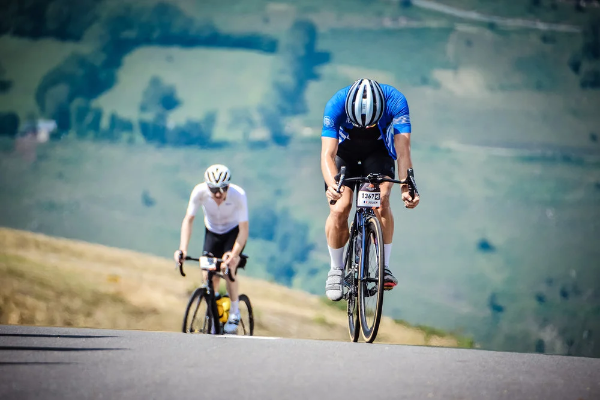Carb cycling is a dietary strategy that alternates between high-carb and low-carb days. It can be an effective way for cyclists to fuel their performance while managing body composition. This guide will help you understand how to start carb cycling for cycling, providing detailed information and practical tips.
What is Carb Cycling?
Carb cycling involves varying your carbohydrate intake throughout the week. This approach typically includes:
High-Carb Days: These days are designed to replenish glycogen stores, especially before or after intense rides.
Low-Carb Days: These days reduce carbohydrate intake to promote fat utilization for energy.
By manipulating carb intake, you can optimize performance and recovery while potentially enhancing fat loss.
SEE ALSO: Does High Resistance Cycling Build Muscle?
Benefits of Carb Cycling for Cyclists
1. Improved Performance
Carbohydrates are the body’s primary energy source during intense activities. By incorporating high-carb days, you ensure that your glycogen stores are full, allowing for peak performance during long rides or races.
2. Enhanced Recovery
After a strenuous ride, replenishing glycogen stores is crucial. High-carb days following intense workouts can speed up recovery, reducing muscle soreness and fatigue.
3. Fat Loss
On low-carb days, the body shifts to burning fat for energy. This can help cyclists achieve a leaner physique without sacrificing performance during high-intensity efforts.
4. Flexibility in Diet
Carb cycling allows for flexibility in food choices. You can enjoy higher-carb foods on specific days while focusing on protein and healthy fats on others.
How to Start Carb Cycling
1. Determine Your Daily Caloric Needs
Before starting carb cycling, calculate your daily caloric needs. This can be done using the following formula:
Basal Metabolic Rate (BMR): This is the number of calories your body needs at rest.
Total Daily Energy Expenditure (TDEE): BMR multiplied by your activity level (sedentary, lightly active, moderately active, very active).
Example Calculation: A 150-pound cyclist with moderate activity may have a BMR of about 1,500 calories. With moderate activity, TDEE might be around 2,500 calories.
2. Set Your Carb Cycling Schedule
Choose a carb cycling schedule that fits your training regimen. Here’s a simple example:
High-Carb Days: 3 days per week (typically aligned with your most intense training sessions).
Low-Carb Days: 4 days per week.
3. Calculate Your Macros
Understanding macronutrients (macros) is crucial for successful carb cycling. Aim for the following distribution:
High-Carb Days:
-
- Carbohydrates: 50-60% of total calories
- Protein: 20-30%
- Fat: 20-30%
Low-Carb Days:
-
- Carbohydrates: 10-20%
- Protein: 30-40%
- Fat: 40-50%
Example for a 2,500 Calorie Day:
High-Carb Day:
-
- Carbs: 1,250-1,500 calories (312-375g)
- Protein: 500-750 calories (125-187g)
- Fat: 500-750 calories (55-83g)
Low-Carb Day:
-
- Carbs: 250-500 calories (63-125g)
- Protein: 750-1,000 calories (187-250g)
- Fat: 1,000-1,250 calories (111-139g)
4. Plan Your Meals
Meal planning is essential for carb cycling. Here are tips for creating effective meals:
High-Carb Day Meals:
- Breakfast: Oatmeal topped with banana and honey.
- Lunch: Quinoa salad with chickpeas, spinach, and feta.
- Dinner: Whole grain pasta with lean chicken and marinara sauce.
- Snacks: Rice cakes with almond butter or a protein shake with fruit.
Low-Carb Day Meals:
- Breakfast: Scrambled eggs with spinach and avocado.
- Lunch: Grilled chicken salad with mixed greens and olive oil.
- Dinner: Baked salmon with steamed broccoli.
- Snacks: Greek yogurt with nuts or cheese sticks.
5. Monitor Your Progress
Track your food intake, energy levels, and performance. Use apps or a food diary to ensure you’re hitting your macro targets. Adjust your carb cycling plan based on how your body responds.
Sample Carb Cycling Schedule
Here’s a sample week of carb cycling for a cyclist:
Monday (High-Carb): Intense training session, high-carb meals.
Tuesday (Low-Carb): Rest day, focus on low-carb meals.
Wednesday (High-Carb): Long ride, replenish with carbs.
Thursday (Low-Carb): Easy recovery ride, low-carb meals.
Friday (High-Carb): Pre-race prep, high-carb intake.
Saturday (Low-Carb): Rest day, focus on protein and fats.
Sunday (High-Carb): Race day, optimal carb loading.
Tips for Success with Carb Cycling
1. Stay Hydrated
Proper hydration is crucial. Drink plenty of water throughout the day, especially on high-carb days to support glycogen storage.
2. Focus on Quality Carbs
Choose complex carbohydrates like whole grains, fruits, and vegetables. These provide sustained energy and essential nutrients.
3. Don’t Skip Protein
Adequate protein intake is essential for muscle repair. Ensure you include protein-rich foods in every meal.
4. Be Mindful of Fat Intake
While fats are important, balance is key. Opt for healthy fats like avocados, nuts, and olive oil, especially on low-carb days.
5. Listen to Your Body
Everyone’s response to carb cycling can vary. Pay attention to how you feel and adjust your carb intake accordingly.
6. Consult a Professional
Consider working with a nutritionist or dietitian, especially if you’re new to carb cycling. They can help tailor a plan specific to your needs.
Common Mistakes to Avoid
1. Underestimating Carb Needs
Many cyclists worry about gaining weight and cut carbs too much. Ensure you consume enough carbs on high days to fuel your rides.
2. Ignoring Quality of Foods
Focusing solely on macronutrients can lead to poor food choices. Prioritize whole, nutrient-dense foods for optimal health.
3. Skipping Meals
Skipping meals can lead to nutrient deficiencies and affect performance. Stick to a regular eating schedule.
4. Not Adjusting for Training Intensity
Your carb needs may change based on training intensity. Increase carbs on more demanding days and decrease on lighter days.
Conclusion
Starting carb cycling for cycling can be an effective way to enhance your performance, support recovery, and manage body composition. By understanding the basics of carb cycling, setting a schedule, planning meals, and monitoring progress, you can successfully implement this dietary strategy. Remember to listen to your body and adjust as needed for the best results. Happy cycling!
Related topics:
- Is Cycling Good for Your Core?
- What is a Recumbent Exercise Bike Good For?
- Is a Recumbent Bike Good for Osteoporosis?

